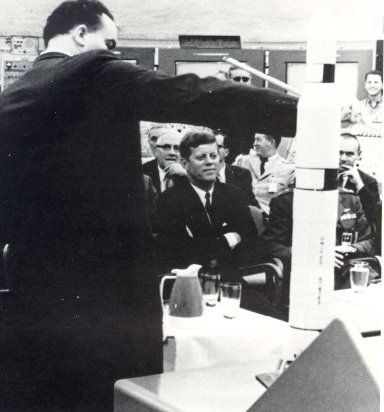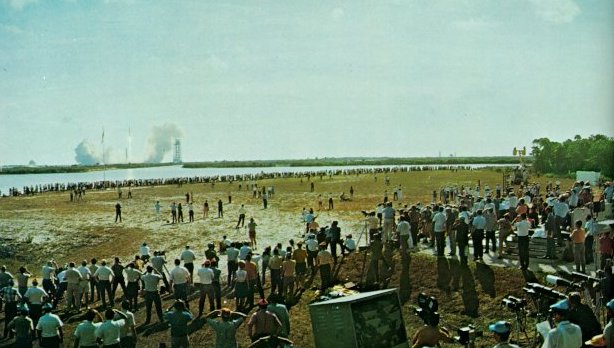















|

| President John F. Kennedy is briefed on the developing plans for Launch Complex 39, designed to carry out his call for men on the Moon before 1970. |

|
| Apollo 11 lifting off the pad on July 16, 1969, the culmination of years of intense activity at the Cape. In this wide-angle view from the press site, all eyes squint in the direction of the hot morning Sun and the distant Launch Pad 39A, where the exhaust gases of the rocket's first stage have been split by the flame deflector into two distinct columns of flame and smoke. |


